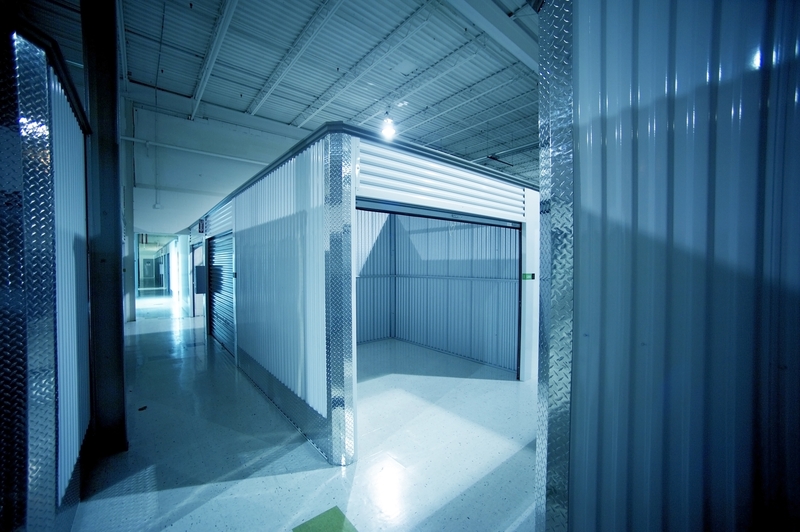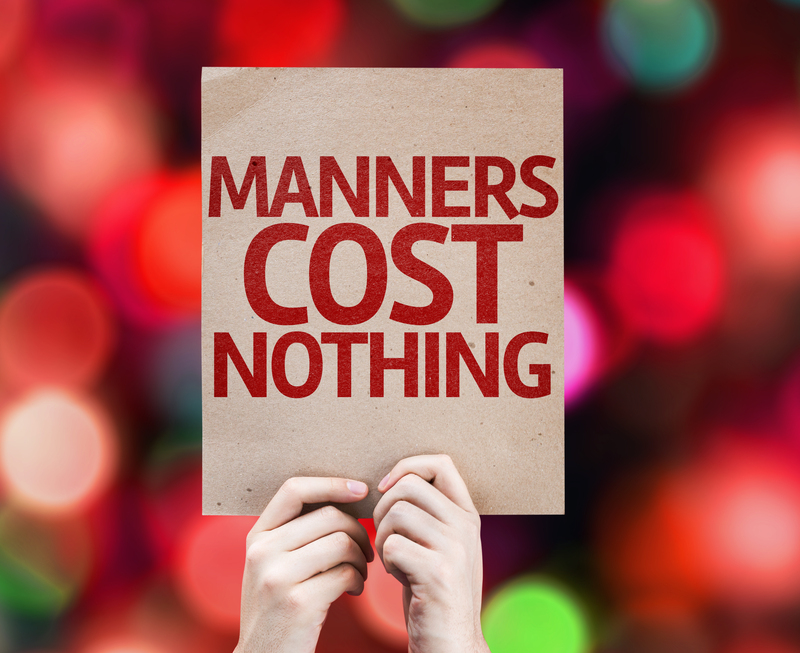How to Organize and Pack Efficiently for Your House Move
Posted on 22/06/2025
How to Organize and Pack Efficiently for Your House Move
Moving house is commonly listed among life's most stressful events. Whether undertaking a local move or relocating across the country, the process involves meticulous planning, robust organizational skills, and an efficient packing strategy. Organizing and packing efficiently for your house move can simplify the experience, reduce stress, and ensure your belongings arrive safely at your new home. This comprehensive guide shares expert tips, packing hacks, and organizational strategies to help you master your next move.
Why Efficient Packing Makes All the Difference
Effective organization and packing lay the foundation for a smooth moving process. By focusing on efficiency, you can:
- Minimize moving costs through fewer trips or smaller vehicles
- Prevent damage to your valuables by packing correctly
- Reduce unnecessary clutter in your new home
- Simplify unpacking and settling into your new space
- Decrease stress and avoid last-minute chaos

Step 1: Plan Your Move Like a Pro
Create a Master Moving Checklist
One of the cornerstones of organizing your house move is establishing a detailed checklist. Begin as early as possible--at least 6-8 weeks before moving day. Break down tasks into manageable steps, such as notifying utility providers, gathering packing materials, hiring movers, and reserving elevators if necessary.
- Set key deadlines for booking services, packing, and paperwork
- Track expenses to stay within your moving budget
- Assign tasks if moving with family, roommates, or partners
An organized checklist ensures no critical detail is overlooked and makes your house move far more efficient.
Gather Quality Packing Supplies
Before packing for your move, stock up on durable supplies:
- Sturdy cardboard boxes in assorted sizes
- Clear plastic bins for valuables or essentials
- Packing tape and tape dispensers for speedy sealing
- Bubble wrap, packing paper, or soft textiles for cushioning
- Permanent markers for labeling
- Color-coded labels or stickers
- Zip-top bags for small components, screws, and hardware
Don't forget specialty boxes for items like mirrors, artwork, and wardrobes. Investing in the right supplies helps organize your move from the get-go.
Step 2: Declutter and Downsize Before You Pack
The Golden Rule for Efficient House Moves
One of the most significant ways to pack efficiently for your house move is to declutter before you even bring out the first box. Moving is the perfect opportunity to evaluate your belongings and part ways with items you no longer need. Follow these steps:
- Sort by category: Clothes, books, kitchenware, papers, miscellaneous, sentimental items.
- Ask yourself: Do I use it? Do I love it? Is it worth the cost and effort to move?
- Designate separate boxes for donation, recycling, selling, and discarding.
- Organize a garage sale, or list items online to earn extra moving funds.
Decluttering means fewer items to pack and unpack, reduced transportation costs, and a fresh start in your new home.
Step 3: Organize as You Pack - Room by Room Strategy
Divide and Conquer for Optimal Organization
Rather than scattering your efforts, packing systematically by room minimizes confusion, keeps your belongings grouped logically, and makes unpacking a breeze. Try this sequence:
- Storage areas (attics, basements, garages) - Start with infrequently used spaces
- Out-of-season clothing and decor - Box up any items you won't need soon
- Guest rooms and spare bedrooms
- Books, home offices, and entertainment centers
- Living areas
- Bedrooms
- Kitchen and bathrooms (save for last due to daily use)
Label each box boldly with the destination room and a brief summary of contents. Adding colored tapes or stickers makes boxes easily identifiable during unloading.
Step 4: Smart Packing Techniques for an Efficient Move
Pack Like a Pro: The Right Way to Pack Boxes
- Heaviest items go on the bottom, lighter items on top.
- Fill every box to capacity to prevent collapsing and shifting.
- Don't overpack boxes: Keep weight under 45 lbs (20 kg) to avoid injuries and box breakage.
- Use soft items like towels, bedding, or clothes as cushioning.
- Double-box fragile or valuable items.
- Seal boxes with high-quality tape - don't skimp!
- Label all sides - not just the top - for easy identification while boxes are stacked.
Efficient Packing Tips for Specialty Items
- Electronics: Photograph cables and connections, pack in original boxes, or use plenty of padding.
- Dishes and Glassware: Wrap each piece individually, pack vertically, and cushion excess space.
- Clothes: Leave clothes on hangers, slip them into wardrobe boxes, or roll and store in suitcases or bags.
- Books: Pack flat in small boxes to avoid excess weight and spine damage.
- Artwork and Mirrors: Use mirror boxes, reinforce corners, and add padding layers.
Step 5: Organize for a Seamless Moving Day
Packing an Essentials Box
The first night in your new home should not involve digging through dozens of boxes. Prepare a clearly labeled "essentials box"--or suitcase--for each family member. Include:
- Basic toiletries (toothbrush, soap, toilet paper)
- Daily medications
- Chargers and electronics
- Clean clothes and pajamas
- Important documents (passports, birth certificates, moving contracts)
- Snacks, water bottles, basic kitchen utensils
- Bedding or sleeping bags
Having essentials easily accessible makes your first day and night comfortable and stress-free.
Managing Moving Day Logistics
- Reserve parking spaces for moving trucks.
- Confirm details with your moving company (addresses, times, contact numbers).
- Supervise loading to ensure fragile and high-priority boxes are placed appropriately.
- Double-check every room, garage, attic, and closet before leaving.
Efficient organization of your house move doesn't stop at packing--clear communication, labeling, and monitoring all play vital roles until the last box is off the truck.
Step 6: Unpacking and Settling In Efficiently
Unpack in Logical Order
Unpacking efficiently is just as important as packing. Start with the items you need most: beds, toiletries, kitchenware, and children's essentials.
- Arrange furniture and large essentials first before opening smaller boxes.
- Set up sleeping spaces and bathroom access as a priority.
- Gradually unpack room by room following your original labeling system.
Recycle or reuse packing materials, and keep your new home organized from day one by designating storage for all items as you unpack.
Post-Move Tips for Staying Organized
- Update your address everywhere: banks, subscriptions, work, and friends.
- Establish a system for mail and paperwork right away.
- Schedule utility hookups and verify all services are operational.
- Take the opportunity to implement new home organization strategies.
Efficient packing and organization for your move create a positive start in your new space and help your family feel settled sooner.
Bonus Tips: Packing Hacks to Maximize Organization and Efficiency
- Use what you have: Laundry baskets, tote bags, and suitcases double as moving containers.
- Keep hardware and screws organized: Place them in zip-top bags labeled with a marker, then tape each bag to the corresponding furniture item.
- Prevent spills: Remove lids from toiletries, cover with plastic wrap, then re-cap tightly.
- Electronics setup: Take photos of cable setups for TVs, computers, and gaming consoles for easier reinstallation.
- Color-coding system: Assign each room a color and stick matching colored labels on boxes and corresponding doors in your new home.
- Leave drawers filled: Remove drawers from dressers, wrap in plastic, and transport them as-is for easy reassembly.
- Pack a toolkit: Keep basic tools handy for disassembling or assembling furniture the moment you arrive.

Frequently Asked Questions About Packing and Organizing Your House Move
How early should I start packing for a house move?
Begin packing valuable and non-essential items four to eight weeks before your move. The earlier you start, the less rushed and more organized your packing will be.
How do I avoid breaking fragile items?
Use plenty of cushioning materials, never leave empty space in boxes, double-box fragile content, label boxes as "fragile," and stack them on top of sturdier boxes in the truck. Efficient packing keeps valuables safe.
How can I organize my move with kids or pets?
Prepare essentials kits for each child and pet. Keep favorite toys, snacks, and comfort objects close by. Arrange for child or pet care on moving day for a smoother process and less stress for everyone involved.
Should I hire movers or DIY my move?
This depends on your budget, the size of your move, and distance. Professional movers are efficient and can handle heavy lifting and logistics, but DIY moving offers greater flexibility and potential savings--if you have help.
Conclusion: Organizing and Packing for a Smooth, Efficient Move
Organizing and packing efficiently for your house move requires careful planning, proactive decluttering, strategic packing, and thoughtful unpacking. With the steps and tips above, you can minimize stress, save money, and start your new life on the right foot. Remember, preparation is the key: organize your move by setting a timeline, gathering supplies early, decluttering, and packing methodically by room and priority. Your future self will thank you for a hassle-free transition that transforms moving day from an ordeal into an exciting new beginning!
Ready to move? Put these house move organization and efficient packing tips into action and enjoy a seamless relocation!









